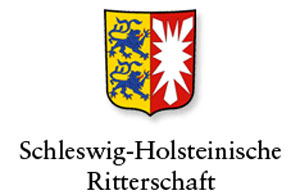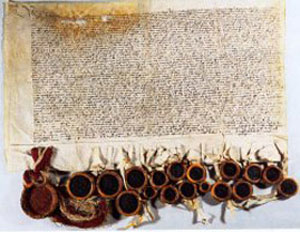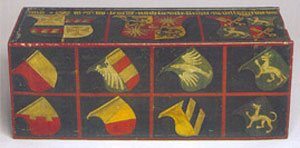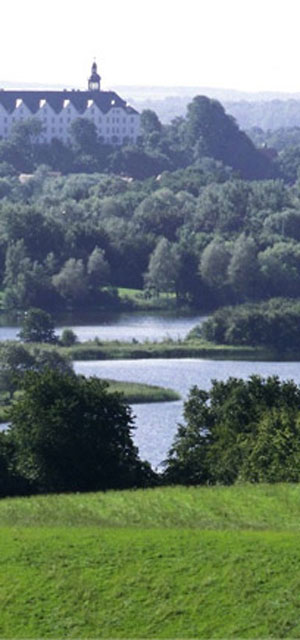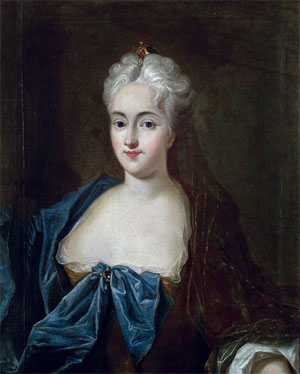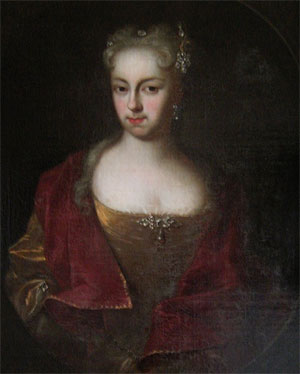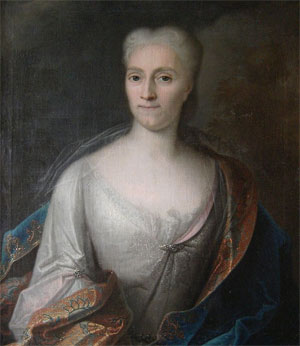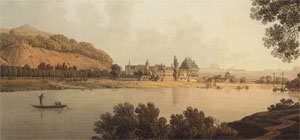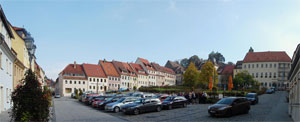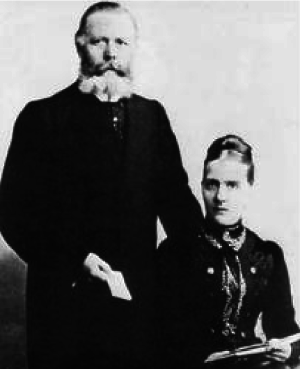by Wikipedia
Accessed: 2/3/18
NOTICE: THIS WORK MAY BE PROTECTED BY COPYRIGHT
YOU ARE REQUIRED TO READ THE COPYRIGHT NOTICE AT THIS LINK BEFORE YOU READ THE FOLLOWING WORK, THAT IS AVAILABLE SOLELY FOR PRIVATE STUDY, SCHOLARSHIP OR RESEARCH PURSUANT TO 17 U.S.C. SECTION 107 AND 108. IN THE EVENT THAT THE LIBRARY DETERMINES THAT UNLAWFUL COPYING OF THIS WORK HAS OCCURRED, THE LIBRARY HAS THE RIGHT TO BLOCK THE I.P. ADDRESS AT WHICH THE UNLAWFUL COPYING APPEARED TO HAVE OCCURRED. THANK YOU FOR RESPECTING THE RIGHTS OF COPYRIGHT OWNERS.
The equites originarii (Latin for original knights) are the noble families of Holstein and Stormarn, who settled there about 750 years ago, in the High Middle Ages.
History
At the height of the power of the Estates, that is to say in the 15th and 16th centuries, there were about 25 to 30 genders, who belonged to the Equites Originarii. Of the Holstein Uradelsgeschlechtern existed in 1590 following (in the current spelling):
Ahlefeldt,
Blome,
Breide (extinct † 1675),
Brockdorff,
Buchwaldt, *
Damme († 1679),
Gadendorp († 1613),
vd Hagen († 1641),
Heesten or Heist († 1642),
Hoken or Höcken († 1741),
Krummendieck (in Schleswig-Holstein † 1598, in Sweden † 1529, in Norway † 1530, in Denmark † 1541),
Meinstorp († 1664),
Plesse († 1639),
Pogwish († 1845),
Torments,
Rantzau,
Rathlow († 1752) - a bourgeois small-branched branch, which comes from the Danish Colonel Siewert Detlevsen (* 1630, died 1677), (spelling: Ratleff / Radeleff / Ratlöf) dies only in the 19th century on Langeland,
Reventlow,
Rumohr,
Sehestedt (in Schleswig-Holstein † 1711, in Denmark † 1882),
Smalstede († 1618),
Stake († ca 1555),
Stove or Stöven († 1630),
Swyn († 1577),
Thienen (in Schleswig-Holstein † 1814),
Wahlstorf († after 1634, in French services),
Wensin († 1658),
vd Wisch ,
Wittorp († 1697,
Wohnfleth († 1747).
As early as the 15th century and the 16th century, many noble families or lines were extinct by noble families with their own gender names, for example:
Alverstorp († 1440),
Ash mountain († 1535),
Barsebeke († 1495),
Block († 1430),
Bosendal († ca 1535),
Campe (n) († 1499),
Canned corn († 1476),
Hake († ca 1585),
vd Helle († ca 1461),
Hummersbotele or Hummelsbüttel († 1496),
Kale († 1420),
Cures or Kühren († 1435),
Kule († 1492),
Lasbeke († 1475),
Latendorp († c. 1485),
Lembek († 1562),
Mistorp († 1555),
Muggele or Mucheln († ca 1475),
Muk (k) esvelde (= Muggesfelde) († around 1425),
Plone or Plön († around 1405),
Porsvelde or Postfeld († 1503),
Rickesdorp and Rixtorp († 1509),
Sandbergh († 1473),
Schinkel († ca 1495, in Denmark † 1560),
Selsingen († 1420)
Siggem († 1500),
Smalstede († 1546),
Swawe († 1500),
Tedinghuusen / Tinhuus or Tetenhusen († 1556),
Tralow and Tralau († ca 1420),
Wiltberg († ca 1475),
Zeggendorp (= Sechendorf) († ca 1410).
Among the noble families immigrated in the late Middle Ages and in the early modern period and included informally include the Thienen (before 1314, from 1840: Baron von Thienen-Adlerflycht), from the Hagen (around 1320) Blome (about 1406) and v. Schack (before 1584). Only the southern Jutland Uradelsgeschlecht Holck (now Count Holck) found direct inclusion in the Holstein knighthood; the Möed (Möeth or Moeten) were only occasionally involved, so sold Claus Möeth 1381 property in Arensberg in Plön, Claus Möeth drew on May 2, 1469 in Kiel as the only Schleswig Uradeliger the Kiel protection and Trutzverbund the Holstein knighthood against Count Gerhard from Oldenburg with and Schack Möeth (Burgvogt of Kiel) fell in 1500 at Hemmingstedt. The Godow - today Godau on Plöner See - († ca 1510) emigrated to Lolland in 1330; the V. Rastorp († 1749, in Denmark: Rostrup) are around 1327/28, the v.. Stampe († ca 1550) are around 1360 and the vd Knope or Knoop († 1565, Denmark: Knob (e)) and the v. Ronnow († 1600) emigrated to Denmark in 1413/14 and is therefore not listed.
According to information of the knighthood, only the following Holstein Uradels families flourished in 1837: v. Ahlefeldt, v. Blome († 1945), v. Brockdorff, v. Buchwaldt, v. Torment († 1890, a unebenbürtiger branch, which comes from the Dutch Captain Hans Hanssen (*1661, † 1713), exists since the early 18th century in South Jutland (spelling: of torments)), v. Rantzau, v. Reventlow, v. Rumohr, v. Thienen, vd Wisch († 1873).
Today only nine of these equites Originarii exist: the families Ahlefeld, Brockdorff, Buchwaldt, Rantzau, Reventlow, Rumohr and Thienen-Adlerflycht, as well as the not belonging to the actual Holstein, chivalrous Uradel families Holck, the branch of Count Holck on Eckhof (Danish Wohld in the Duchy of Schleswig) was eagerly received at the beginning of 1800, and Schack, who came from Bardowick in the Electorate of Lüneburg via the Duchy of Saxony-Lauenburg around 1580 to the duchies of Holstein and Schleswig, whose affiliation was recognized in early 1714, and in the corporative community of equites Originarii were recorded. The Originarii always had special rights and privileges, even over the other noble families that did not belong to this group.
The coats of arms of today still existing noble families of the Schleswig-Holstein Ritterschaft:
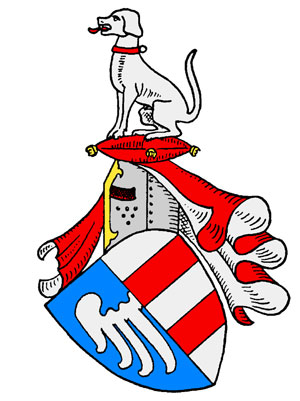
Ahlefeld
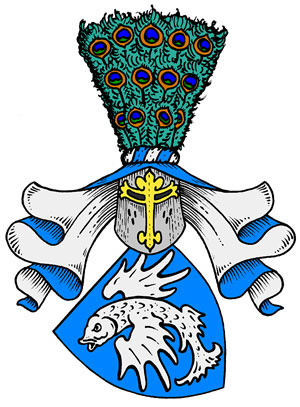
Brockdorff
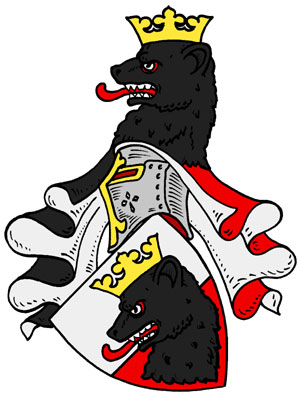
Buchwaldt
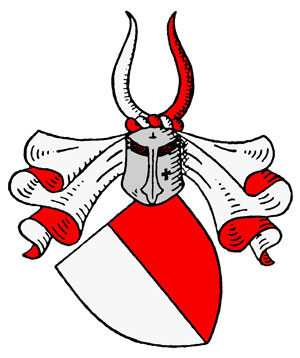
Rantzau
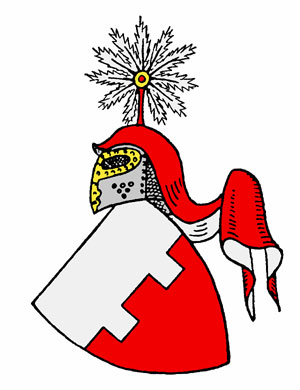
Reventlow
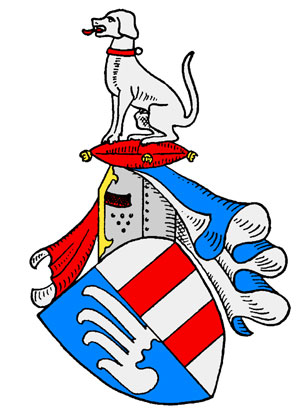
Rumohr
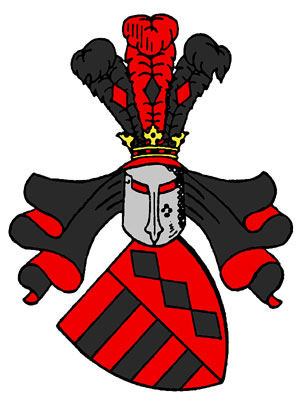
Thienen-adlerflycht
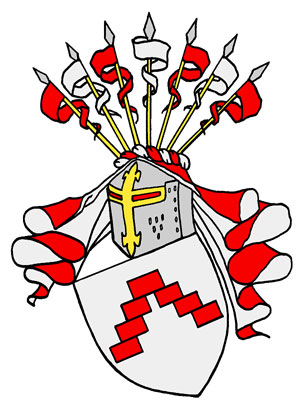
Holck
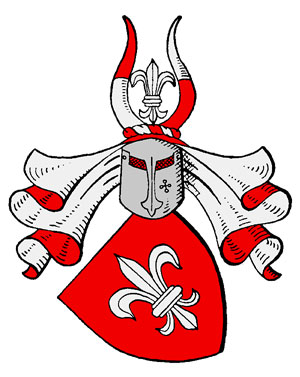
Schack
Probably the most famous act of the Schleswig-Holstein knighthood is the Treaty of Ripen, in which they chose the Danish King Christian I Duke of Schleswig and Earl of Holstein and Stormarn.
Recepti
The second important group of the Schleswig-Holstein nobility are the so-called Recepti (recorded), which by a special legal act unconditionally or conditionally, so only as far as a noble estate in Schleswig-Holstein in the family property was received, d. H. Families admitted to the knighthood. Here you have to differentiate between two groups:
1. The from the (German) foreign countries immigrated old families, such as the Plessen, Baudissin, Platen, Levetzow, Bernstorff, Mösling, Hahn, Scheel, Holstein, Hessenstein, Schilden, Moltke and Bülow and
2. the originally bourgeois families, namely the Wedderkop († 1962), Liliencron, Kielmansegg, Luckner, Hedemann-Heespen and Schimmelmann.
Demarcation
In the area of the today's country Schleswig-Holstein had Saxonia Lauenburg , thus approximately in the today's circle duchy Lauenburg over own knighthood. The rich bourgeois Lübeck patriciate, on the other hand, was richly-oriented and organized in the circle society because of the imperial immediacy of the city.
Literature
Henning von Rumohr : About the Holstein Uradel. In: Henning von Rumohr (ed.): Dat se bliven ewich poppy ungolded. Wachholtz, Neumünster 1960, pp. 101-152.
Web links
Commons: Equites Originarii - collection of images, videos and audio files
Schleswig-Holstein knighthood
Short overview of the history of the Schleswig-Holstein knighthood
The knighthood has shaped our country for more than 800 years: in the 12th century, the first knightly families are mentioned in a document. But only with the Treaty of Ripen (March 2, 1460), the initially loose alliance of the knights capable of Landtag or later aristocratic landowners of the country as a stand with far-reaching privileges established. A particularly beautiful witness is the privilege drawer of 1503, which today stands in Gottorf Castle.
The Treaty of Ripen was a milestone insofar as the Knights of the Duchy of Schleswig and the County of Holstein joined together for the first time with unprecedented self-confidence and chose their lords themselves, after Adolf VIII had died in 1459 without descendants. The goal of the knights was to ensure a permanent close association of the countries without new conflicts and possible war herds. Therefore, Christian I of Denmark was the man of choice: Schleswig, Holstein and Denmark were governed by him in personal union and he was practically his own fief. In return for Christian's preference for his rival Graf Schauenburg, the knighthood was granted the right to choose his successors - not the Danish kings automatically became feudal lords of Schleswig and Holstein. Many more rights secured the tangible, as the contract is historically correct, the Schleswig-Holstein Knighthood, including, inter alia, the war, tax and coin license. The most famous passage of the treaty to this day is "dat se bliven ewich poppy ungedelt" - politically as well as economically for the Knights of Belang, who mostly had possessions beyond the state borders.
If the king did not live in the country, the knighthood temporarily constituted a multi-headed government body. For a long time it was also extremely powerful - ranging from the state parliament with its trading and financial business, the transhipment, from the late Middle Ages to the 17th century. The knights had the financial power, but also the jurisdiction held. They made history and business. With the emergence of absolutism, however, the Schleswig-Holstein knighthood gradually lost its political significance until it brought the wheels of history in the 19th century in the wake of the national reconsideration: Thus Friedrich explained Friedrich Dahlmann, historian and secretary of the Schleswig-Holstein knighthood, the Treaty of Ripen to a kind of fundamental law not only for the estates, but for the duchies as a whole. While at one time the national differences between German and Danish divided the countries, knighthood and soon also large parts of the originally liberal Schleswig-Holstein movement held the contract for their "historically evidenced law." The inheritance claims of Duke Christian August von Augustenborg further reinforced this.
Finally, it came to the Schleswig-Holstein survey of 1848 and ultimately to the German-Danish wars; the passage "up ewich ungedelt" became a political buzzword through a poem by the Schleswig-Holstein-minded Aabenraa doctor August Wilhelm Neuber. In 1864, after more than 600 years under Danish rule, the state came to an end. Schleswig and Holstein broke away from the kingdom. To this day the traces of the connection to Denmark can be seen and experienced - not least on the political level, where the South Schleswig Voters' Association SSW enjoys a special regulation in the state parliament.
Today, the Schleswig-Holstein knighthood is a group of families, on the one hand a rich past, on the other hand, the "doing" is common. If you go on an expedition through the Internet, you will find various testimonies of how the knights of the present day work for the preservation of the houses, courtyards and facilities that have meanwhile become cultural monuments. Above all, however, by the four aristocratic monasteries, the knighthood is to be perceived by the public.
With the Ritterschaftliche Gesellschaft Schleswig-Holstein / Lauenburg eV, which was founded only a few years ago, it also ensures that history can be experienced. The best example of this is its school trips to the Landesmuseum Schloss Gottorf, where children learn in an age-appropriate way, like our country became what it is.
Treaty of Ripen
Privilege drawer of the Schleswig-Holstein knighthood
Welcome to the page of the Schleswig-Holstein Chivalry!
Those who hear the word knight may think of medieval times, armor and tournaments on horseback, whose winners won trophies or a lovely woman. Another world, a past one.
The Schleswig-Holstein Knighthood is a living institution that keeps pace with the times while at the same time taking the thread of the past into the future. For centuries, the members of the knighthood have shaped the fortunes of the duchies of Schleswig and Holstein, were a strong counterpart to the Danish king, who was their duke in personal union.
Even today, the knightly families take their place in the Schleswig-Holstein events, in culture, agriculture and politics. They are entrepreneurs in a variety of ways and are involved - from organizing school trips to the Gottorf Museum to tell history, to the many wonderful concerts in knightly castles, manor houses and monasteries.

